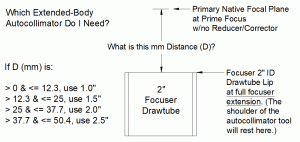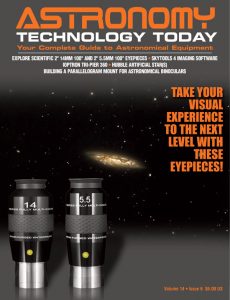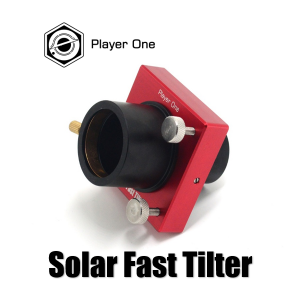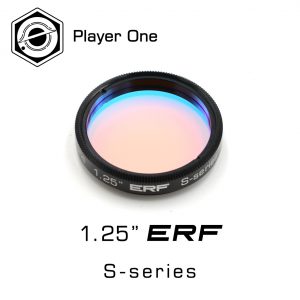
Catseye Infinity XLKP Autocollimator Collimation Tool: Newtonian astrograph telescope users can now confidently take autocollimator focuser-axis alignment to the next level of precision without the need of a focuser drawtube extension.
By design, Newtonian astrographs incorporate a “back-focus” position of the primary mirror’s native focal plane to facilitate image focus at the camera CCD chip. To negate collimation visual queue parallax error, an autocollimator’s mirror surface must be at or near the position of the primary mirror’s native focal plane.
Heretofore, to compensate, imagers stacked an appropriate-length extension tube under their autocollimator to satisfy this constraint. Unfortunately, the increased focuser-axis skew potential of an additional mechanical section in the optical train is counter to collimation precision and has long been a common nemesis.
Enter the Catseye Infinity XLKP autocollimator collimation tool in four barrel-extension lengths (Image 1): 1.0, 1.5, 2.0 and 2.5 inches ($154 to $184US). Additionally, all Catseye autocollimators are now enhanced with flat-black anodized barrels and identified with a handsome laser-engraved logo/Model graphic.
Which Extended-Body XLKP is right for you?

Collimation using a Catseye collimation tool is always done without a corrector/reducer component in the optical path. To ascertain the appropriate Extended-Body XLKP autollimator length to use, the primary mirror’s native focal plane location (prime focus) relative to the focuser must be determined.
This is easily accomplished by first racking the focuser all the way out and then aiming the telescope at the moon or a distant terrestrial object. Place a translucent screen (e.g., waxed or parchment paper) above the focuser and move the screen up or down until the image is in focus. Measure the millimeter distance from the screen to the lip of the focuser drawtube. Use the chart in Image 2 to determine the extended-body length to use.
 And to make it easier for you to get the most extensive telescope and amateur astronomy related news, articles and reviews that are only available in the magazine pages of Astronomy Technology Today, we are offering a 1 year subscription for only $6! Or, for an even better deal, we are offering 2 years for only $9. Click here to get these deals which only will be available for a very limited time. You can also check out a free sample issue here.
And to make it easier for you to get the most extensive telescope and amateur astronomy related news, articles and reviews that are only available in the magazine pages of Astronomy Technology Today, we are offering a 1 year subscription for only $6! Or, for an even better deal, we are offering 2 years for only $9. Click here to get these deals which only will be available for a very limited time. You can also check out a free sample issue here.



